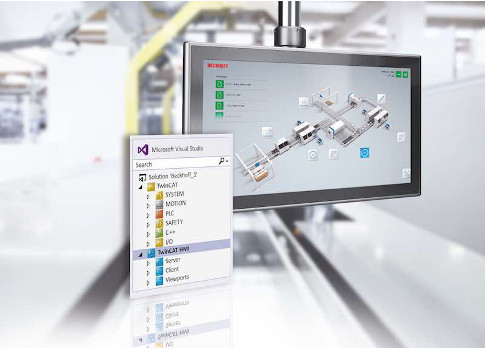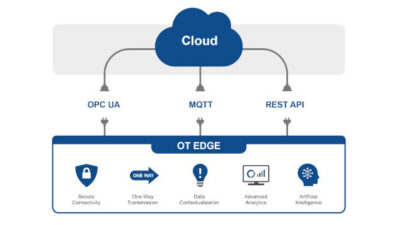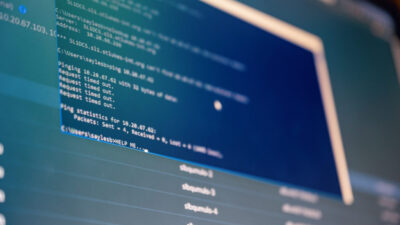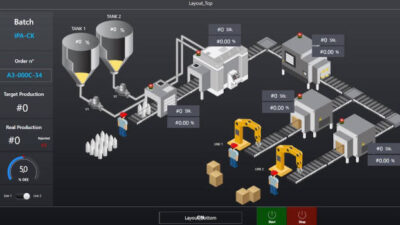Modern human-machine interface (HMI) solutions can benefit from automation technology (AT) and information technology (IT) convergence solutions.

The rapid adoption of programming standards has been a core driver of the convergence of automation technology (AT) and information technology (IT). Significant advancements in control and automation technologies have been developing this way for years, combining traditional programmable logic controller (PLC) code with standards from the computer science realm. Controls vendors have been careful to capitalize on IT standards for automation without losing the confidence of the average PLC programmer and controls engineer. Human-machine interface (HMI) solutions can benefit from this kind of balanced AT/IT interplay.
Instead of the traditional, proprietary systems for HMI engineering and communication that industrial engineers are most familiar with, companies are leveraging IT standards such as Microsoft Visual Studio for engineering, HTML5 for design, and WebSockets and HTTPS for secure communication. It is also possible to connect HMI projects to a source code repository tool such as Team Foundation Server, GIT, or Subversion. This means engineering teamwork and collaboration can be simpler and easier to comprehend as well. It also takes the best standard technologies, proven by a wide range of innovative companies in the business and consumer tech industries, and applies them in new, exciting ways for industrial HMI purposes.
HTML5 is designed to provide simple, high-performance and globally available technology for webpage design. Many major webpage developers and tech companies use it to mitigate many of the previous issues with "living" webpages. Of course, not all controls engineers are well versed in website programming and design, so the HMI programming environment should go well beyond being "user friendly."
HTML5 also helps designers create modern and ergonomic HMI pages and enables numerous browser types to display these webpages. This means that HMI solutions can be highly adaptable: Web-based HMI solutions based on HTML5 and JavaScript can modify the display to best suit the screen in use regardless of the operating system, browser, or device. The same HMI software used in a factory can be deployed across multiple machine types, viewed on numerous industrial display screen formats, including multi-touch displays, and can even be scaled to facilitate comfortable viewing on tablets and smartphones.
The client or the browser can also communicate directly with the HMI server and helps bridge the gap between Web-based clients and industrial control technology hardware. Familiar standards such as HTTPS and WebSockets Secure are designed to help guarantee security from the client to the server. The HMI server, on the other hand, can connect to the respective controller(s) via the appropriate protocols. As an example, the OPC UA protocol could be utilized for HMI to communicate to a wide range of industrial controllers, along with communication with PC-based control software platforms utilizing a protocol such as Automation Device Specification (ADS), BACnet, and IEC 61850.
Powerful HMI architectures facilitate numerous application scenarios-from local HMI panel solutions to multi-client, multi-server, and multi-runtime concepts. Individual extensions can be implemented via defined interfaces, and an available mix of standard graphic controls and custom design elements enables a high degree of individualization. Depending on experience and the application, the HMI logic can be implemented on the client side in JavaScript or as a server extension. This offers the possibility to write extensions in .NET or C++, protecting and enhancing intellectual property for machine builders and manufacturers.
Daymon Thompson is automation product specialist, Beckhoff Automation. Edited by Chris Vavra, production editor, Control Engineering, [email protected].
Key concepts
- Programming standards have been a major reason for the convergence of automation technology (AT) and information technology (IT).
- Companies are leveraging IT standards such as Microsoft Visual Studio for engineering, HTML5 for design, and WebSockets and HTTPS for secure communication instead of proprietary systems.
- HMI logic can be implemented on the client side in JavaScript or as a server extension, which opens up the possibility of writing extensions in .NET or C++, which can protect and enhance intellectual property.
Consider this
What other developments are possible with today’s HMI solutions and what future developments are likely?
ONLINE extra
See more information at www.beckhoff.us/twincat-hmi.
See related stories from the author linked below.



